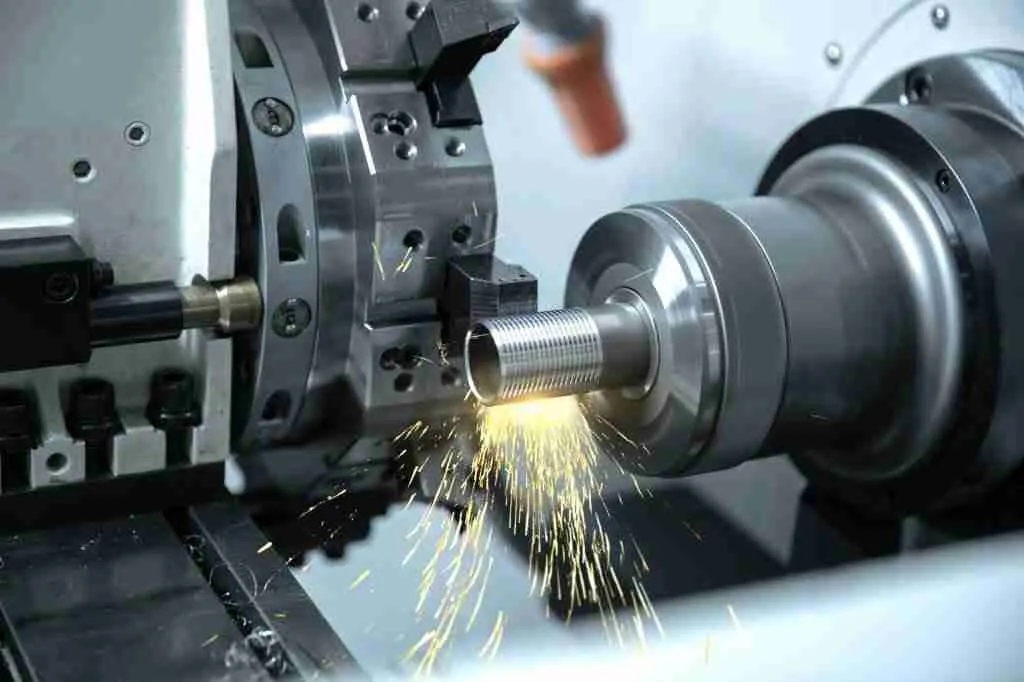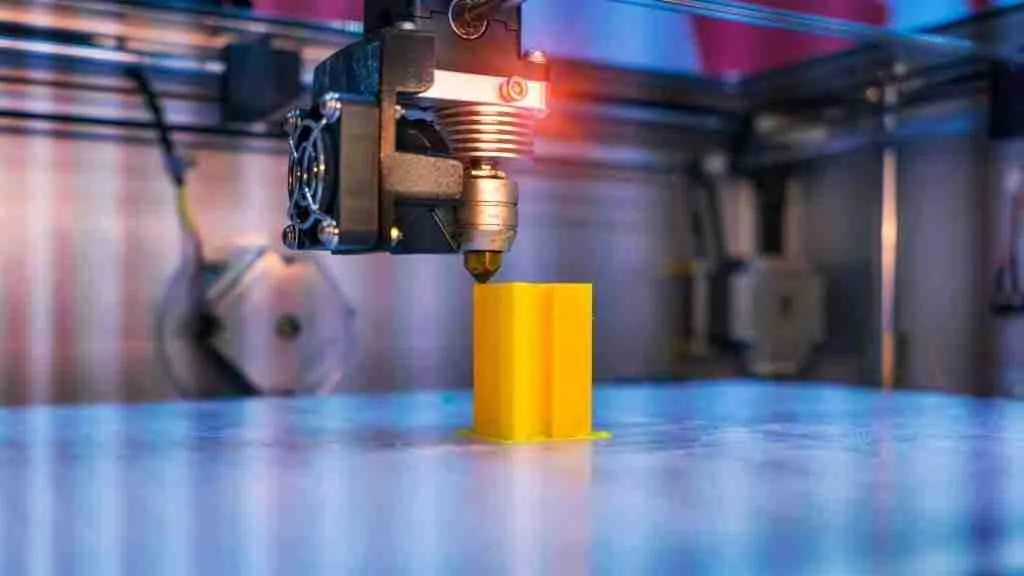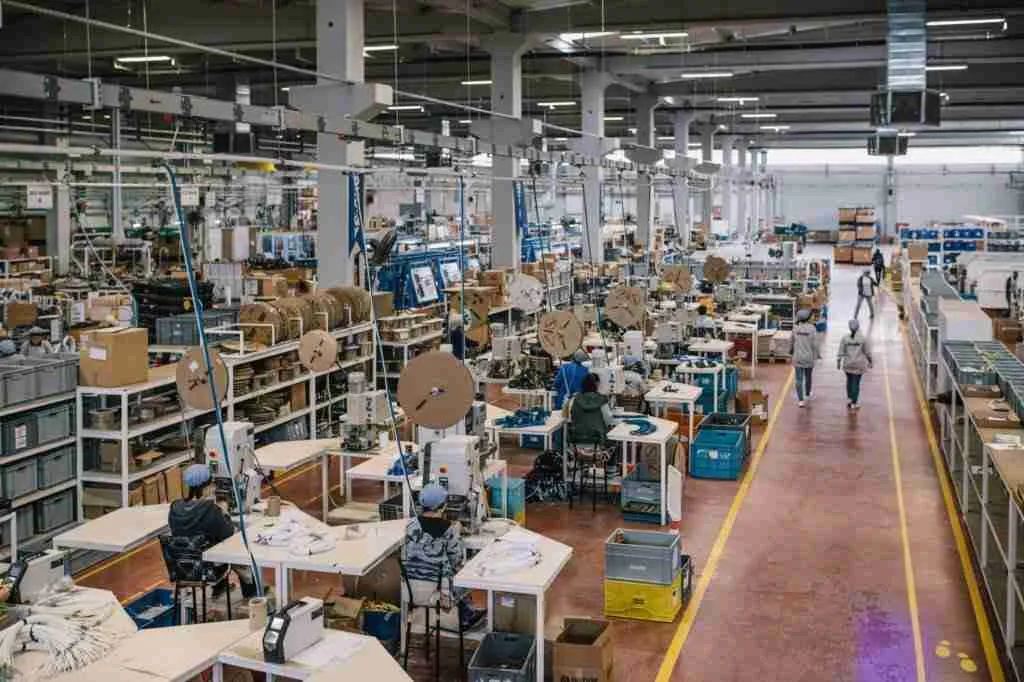3D printing first came about as a method of rapid prototyping. Also called additive manufacturing, it has now developed into a true manufacturing process. 3D printers enable engineers and companies to produce prototype products and end-use products at the same time. Compared with traditional manufacturing processes, it has obvious advantages. These advantages include enabling mass customization, increasing design freedom, reducing assembly, and being a cost-effective low-volume production process.
This article summarizes the differences between 3D printing technology and the currently mature traditional CNC, injection molding and metal injection molding processes.

Comparison of CNC machining and 3D printing
material difference
3D printing materials mainly include liquid resin (SLA), nylon powder (SLS), metal powder (SLM), metal wire (FDM), etc. Liquid resin, nylon powder, and metal powder occupy the vast majority of the industrial 3D printing market.
The materials used in CNC machining are all pieces of plates. By measuring the length, width, height and wear of the part, the corresponding size of the plate is cut for processing. There are more CNC machining materials than 3D printing. Generally, metal and plastic sheets can be processed by CNC, and the density of molded parts is better than that of 3D printing.
Part Differences Caused by Forming Principles
3D printing is to cut the model into N layers/N points, and then stack them layer by layer/bit by bit, just like building blocks. Therefore, 3D printing can effectively process parts with complex structures, such as hollow parts, while CNC can hardly process hollow parts.
CNC machining is the manufacture of cutting materials. Through various tools running at high speed, the required parts are cut according to the programmed cutting path. Therefore, CNC machining can only process rounded corners with a certain radian, while the outer right angle CNC machining is no problem, but the inner right angle cannot be directly processed, and it must be realized by wire cutting/electric spark and other processes. In addition, for curved surfaces, CNC machining of curved surfaces is time-consuming, and if the programmer and operator are inexperienced, it is easy to leave obvious lines on the part. For parts with large inner right angles or curved surfaces, 3D printing does not have the problem of processing difficulties.
Process principle different from CNC 3D printing
Some people pile 3D printed cake flour into a cake, and CNC cut the big cake into small cakes. This analogy is more apt.
Differences in operating software
Most 3D printing slicing software is easy to operate, and you can operate the slicing software proficiently in a day or two with professional guidance. At present, the optimization of slicing software is very simple and supports automatic generation, which is why 3D printing can be popularized to individual users.
3D printing data processing software magics
CNC programming software is much more complex and requires professional operation. People with zero foundation generally need to learn about half a year. In addition, a CNC operator is required to operate the CNC machine. Commonly used are UG, MASTERCAM, CIMATRON, and domestic Jingdiao. These softwares are hard to learn.

CNC programming operation page
A part can have multiple CNC machining schemes, and the programming is very complicated. 3D printing, on the other hand, is relatively simple, as placement has little effect on processing time consumables.
Post-processing differences
There are not many post-processing options for 3D printed parts, generally sanding, sandblasting, deburring, dyeing, etc. Numerous post-processing options are available for CNC machined parts, including polishing, oil injection, deburring, electroplating, silk screen printing, pad printing, metal oxidation, laser engraving, sandblasting, and more.
There are pros and cons to CNC machining and 3D printing. The more important thing is to choose the right processing technology.
The difference between 3D printing technology and injection molding technology
Plastic injection molding refers to a method in which a completely molten plastic material is stirred with a screw at a certain temperature, injected into a mold cavity with high pressure, and then cooled and solidified to obtain a molded product. This process started in the 1920s and has a history of nearly a hundred years. It is a widely used and mature industrial manufacturing technology.
In the plastics manufacturing industry, 3D printing and injection molding are often used as PK, and there are many comments that 3D printing is the terminator of injection molding. For manufacturers, who is more or less competitive is also one of the topics they are most concerned about. So, what is the difference between 3D printing technology and injection molding?
production mode
As long as there is an injection mold in the injection molding process, standardized products can be mass-produced at low cost. As a result, injection molding remains the best option for traditional high-volume, high-volume manufacturing.

Injection molding principle
However, 3D printers can automatically, quickly, directly and accurately convert any shape from a computer into a physical model without the need for traditional tools, fixtures, machine tools or any molds. Thanks to the characteristics of 3D printers that are different from traditional injection molding processes, the more complex and non-physical objects, the faster the processing speed and the lower the cost of raw materials, so they are good at manufacturing personalized and diversified products.
manufacturing cost
Due to the wide range of raw materials for injection molding, its large-scale and rapid standardized production is also conducive to reducing the cost of a single product. Therefore, in terms of manufacturing cost, the cost of injection molding is much lower than that of 3D printing technology.
But for industrial manufacturing, the real cost-saving part of 3D printing is the modification of the prototype. Modifying the prototype only requires modifying the CAD model and does not incur any manufacturing costs.
3D printed plastic products
In injection molding, if the prototype is a steel mold, the retrofit cost will be relatively low, but if an aluminum alloy mold tool is used, the cost will be much higher. This is also the reason why many companies or individuals engaged in mold design choose 3D printers for mold design and printing.
Application field
Currently, the injection molding process enables the mass production of items of the same shape, making it ideal for mass production of standardized products.
3D printing can print raw materials into physical models or even directly manufacture parts or molds by simply inputting 3D images through the control terminal, effectively shortening the product development cycle. At present, 3D printing has been widely used in maker, architectural design, mold model design and other fields.

Glue spray metal 3D printing compared to injection molding
Metal Injection Molding (MIM) is a powerful manufacturing process for mass production of metal parts. However, binder jet metal 3D printing offers an attractive alternative with its unique advantages.
Jet metal 3D printing uses an array of nozzles to slice the CAD model, resulting in a series of 2D data. According to the two-dimensional pattern obtained by slicing, the binder is selectively sprayed in the metal powder bed to solidify and form, and the entire blank part is produced by stacking layer by layer. The green part is then pre-sintered to obtain a certain strength, and then the powder is cleaned. Finally, the binder is removed by high-temperature sintering, and the powder particles are melted to obtain high-density, high-strength parts. The two technologies have both similarities and differences.
Similarities and differences between jet metal 3D printing and injection molding
First, 3D printing has fewer design constraints, and the feature of manufacturing parts layer by layer allows this technology to have better design freedom. In principle, the printing of various complex shapes can be realized. This also means that several parts can be integrated – several connectors can be replaced by one, but the function is the same – thus reducing the number of parts and assembly time. The design of MIM needs to consider the demoulding of the part, so it restricts some shapes and cannot make complex structural parts like 3D printing. However, due to the effects of gravity, friction, and shrinkage, the post-sintering process of binder jet metal 3D printing is not good at processing large-area thin-walled parts without support structures, nor is it good at making dendritic parts.
Jet Metal 3D Printing and Injection Molding Principles
Secondly, the molding process is different. Binder jet metal 3D printing is cured by selective jetting of an array of nozzles, while MIM is injection molded through a mold. However, the post-processing process of the two is the same, and both require high-temperature sintering. After sintering, the density of 3D printed parts can reach more than 98%, similar to the MIM process. But because MIM requires a special debinding process, it cannot make very thick parts.
Also, binder jet metal 3D printing has fewer manufacturing steps than MIM. MIM is required to open the mold, and the glue-sprayed metal 3D printing can directly print the parts. Because the processing speed for small batches is significantly better than the MIM process. Moreover, once the MIM mold is processed, it is not easy to adjust. Therefore, metal 3D printing can be iterated many times without increasing cost.
Binder jet metal 3D printing and MIM how to choose?
In most cases, how to choose depends mainly on the yield. For prototyping and small batch production, such as tens of thousands of pieces, choosing the former is a good choice. However, MIM is more cost-effective in mass production. For example, the MIM process can choose hundreds of thousands or less.
Besides yield being the decisive factor, there are other reasons.
Due to the limitations of degreasing, MIM cannot make parts that are too large or too thick. Generally, the mass of MIM parts is below 500g, so for large-sized parts, the 3D printing process is the first choice.
Comparison of Injection Molded and Binder Jet Metal 3D Printed Parts
In addition, complex designs also tend to opt for 3D printing because the geometry of MIM parts is limited by demolding.
There are also differences in the surface quality of the two processes. The surface finish of MIM is slightly higher, the roughness is about 1~2μm, and the surface roughness of the glue-sprayed metal 3D printing parts is above 3μ. For those with high requirements on assembly accuracy, CNC is required in the post-processing stage, and injection molding or 3D printing can be selected.
Finish
3D printing is a useful supplement to traditional manufacturing processes, no matter what form of process it is. For some small batches and complex products, the cost of mold opening or other traditional processes is relatively high. At this time, 3D printing may have a more obvious price advantage and manufacturing efficiency. Therefore, as the understanding of 3D printing technology in specific industries deepens in the future, this technology will become an option in the industry chain. 3D printing is just a processing technology.





